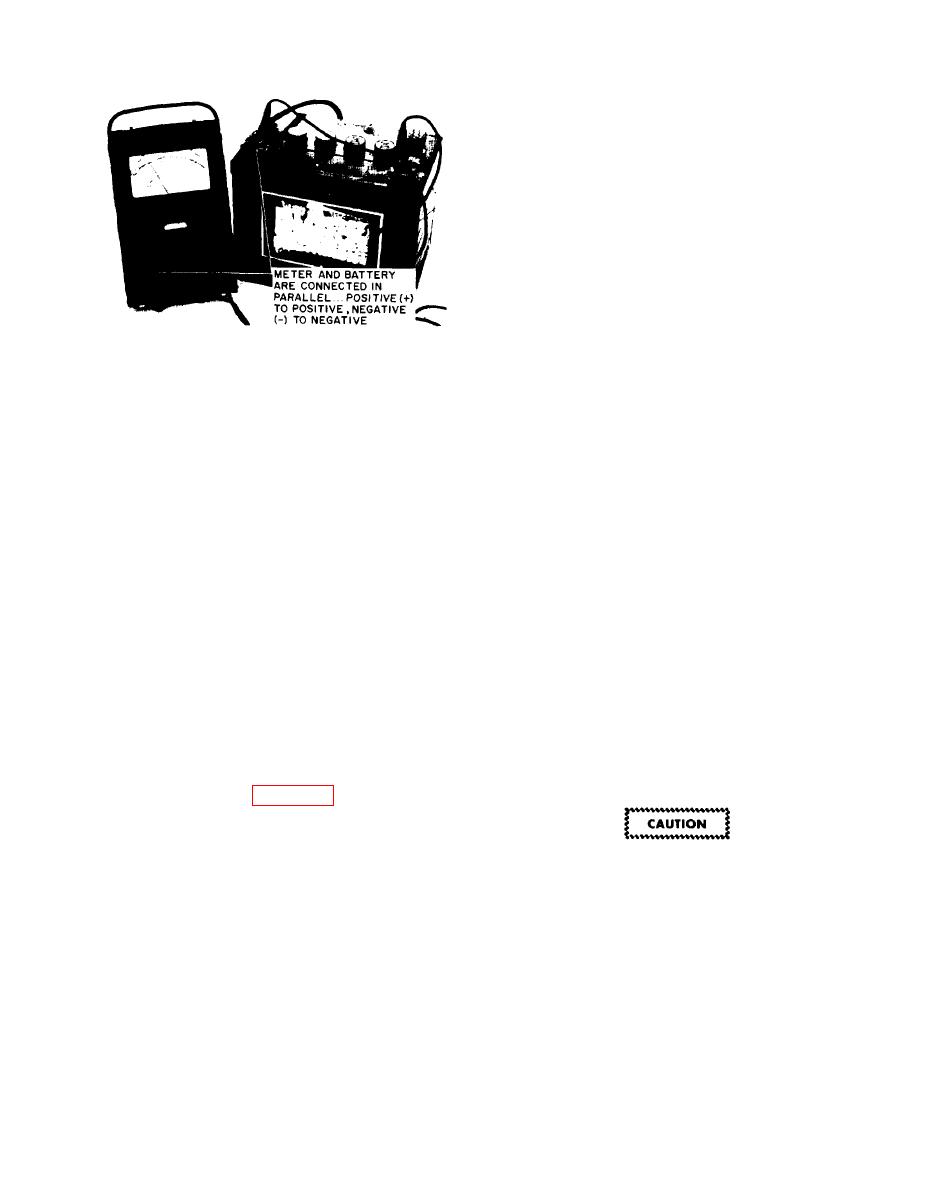 |
|||
|
|
|||
|
Page Title:
Figure 4-39. Battery Test Hook-up |
|
||
| ||||||||||
|
|
 read 12+ volts. If reading is below 12 volts, battery
is defective or under-charged.
f . Reconnect coil wire to distributor, and start
and accelerate the engine to obtain a reading of
alternator output. Charging system output should
be at least 12-l/2 volts. If not at least 12-l/2 volts,
then the problem is in the charging system.
4-36. ENGINE PERFORMANCE CHECK. At
l000-hour
maintenance
interval,
every
the
following check of engine performance should be
made to determine whether engine is in need of a
tune-up or is out of adjustment.
Figure 4-39. Battery Test Hook-up
a. Before making check, run engine until unit is
at operating temperature. This is important as the
transmission oil temperature should be 200 degrees
and the difference between highest and lowest cell
F. and the engine water jacket should be at
is less than 0.05 volt, battery is good but requires
operating temperatures. Apply parking brake.
charging.
b . With the engine operating at idle and the
f. If any cell reads 1.95 volts or more and there is
transmission in NEUTRAL, check the fluid level
a difference of 0.05 volt or more between the
on the dipstick. Fill if necessary to the FULL mark
highest and lowest cell, the battery is defective.
on the dipstick, using Type "A", Suffix "A"
Automatic Transmission Fluid (Clark Part Number
g. If all cells read less than 1.95 volts, battery is
879803; fluid containers must display a
too low to test accurately. Boost-charge and repeat
qualification number prefixed by "AQ-ATF").
light load test.
c. With a tachometer, check engine for governed
4-35. STARTING/CHARGING SYSTEM TESTS.
speed at full throttle. The unloaded engine RPM
The following test will help in localizing any
should be set at 2350.
problem within the alternator, starter or battery.
d. Check the governed engine speed with partial
a. Disconnect the high tension coil wire from the
load. With engine at full throttle and the tilt lever
distributor cap. Clip a jumper lead onto the coil
i n full backward tilt, momentarily hold the tilt
wire terminal and ground the jumper to the engine
l e v e r back to load the engine. With the engine
block or ground strap.
l o a d e d in this manner, the approximate engine
RPM should be 2200.
b. Hook up a voltmeter across the battery
terminals as shown in figure 4-39.
c. Depress the accelerator pedal fully (to obtain
higher compression) and crank the engine over by
Prolonged stalling of the converter can
engaging the starter for a few seconds, while
c a u s e internal damage to the converter.
observing voltmeter reading.
Stall converter only long enough to attain
the peak RPM reading - maximum 30
d. During cranking, voltmeter should read at least
seconds.
9.6 volts. If reading is low, a problem exists in the
cranking system (battery, starter, or cables).
e. With a capacity load on the forks, check for
normal stall RPM by positioning machine against
e. Immediately after cranking, voltmeter should
4-29
|
|
Privacy Statement - Press Release - Copyright Information. - Contact Us |